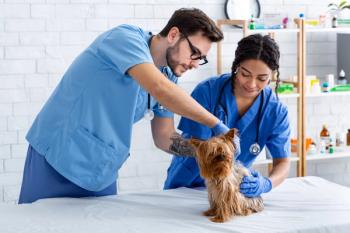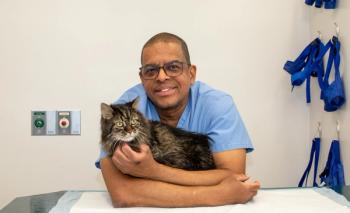
Physical rehabilitation at your veterinary hospital
Physical rehabilitation is the best way to help patients heal quicker, safer, and improve their overall quality of life.
Physical rehabilitation can only be performed correctly once the veterinarian provides a proper diagnosis of the conditions. Registered veterinary technicians must perform any physical rehabilitation under a veterinarian's direct or indirect supervision. Please refer to your state's law to determine what applies to you and your practice. Also, you should always get permission from the attending veterinarian to begin any type of rehabilitation, as there may be underlying circumstances that would prohibit any of the following exercises to be performed.
• Hot and cold compresses: If your veterinary practice performs any type of surgery—including spays and neuters—putting cold compresses on the incision or surgical area postoperatively three times a day for five to 10 minutes for the first 72 hours is highly recommended. This will help with the acute inflammation stage. Then switch to warm compresses to continue to help stimulate healing and decrease inflammation, again, three times a day for five to 10 minutes. Remember, too hot for you is too hot for animals; test the warm pad on your own skin before applying to the patient.
• Passive range-of-motion: This type of exercise involves gently flexing and extending both the front and rear limbs. Depending on the joint you are specifically working on, remember to isolate the joint. For example, doing the bicycle range of motion by pulling on the paw when trying to flex and extend the hip puts abnormal forces on the remaining joints and muscle, and it can cause more harm than good. Simple flexing and extending after warming with a warm pack will offer a better outcome.
• Controlled leash walks: This exercise is just as it sounds—controlled. Having your patient heel next to you while walking slowly with its head up—not down sniffing the ground—is a great way to encourage weight loading on an injured limb. It also encourages proper posture by shifting weight to the normal posture of 60 percent front-limb load and 40 percent rear-limb load.
These are just a few examples of types of rehabilitation that could be performed in your clinic to build your technical skills and your practice. Physical rehabilitation is the best way to help patients heal quicker, safer, and improve their overall quality of life. It is beneficial for dogs with severe osteoarthritis or obesity as well as those that just need conditioning or fitness training.
Newsletter
From exam room tips to practice management insights, get trusted veterinary news delivered straight to your inbox—subscribe to dvm360.





